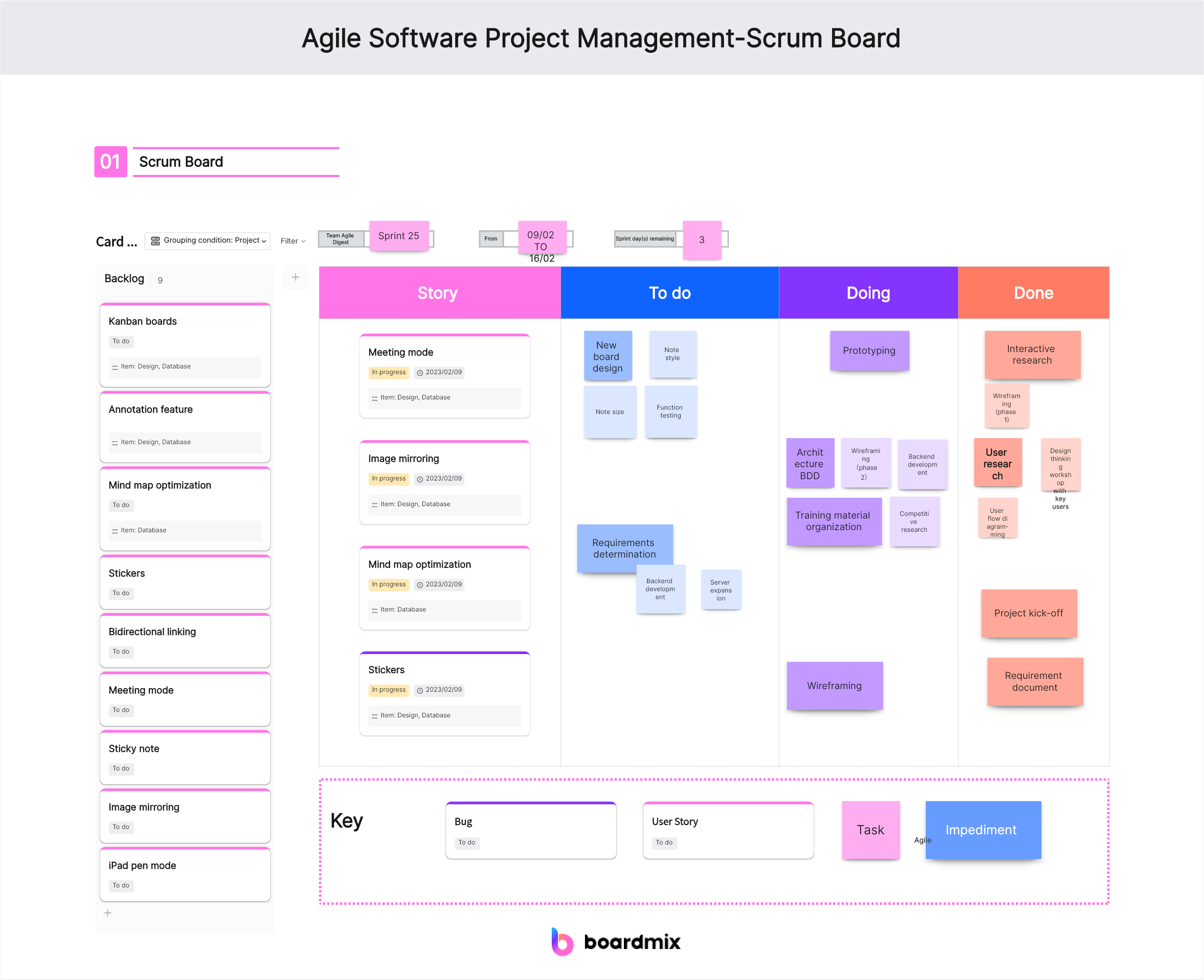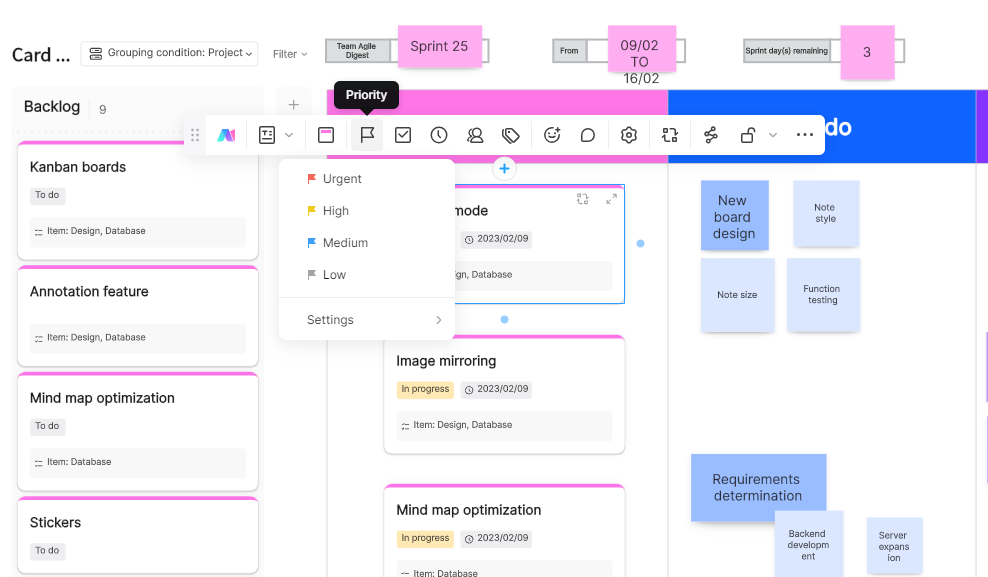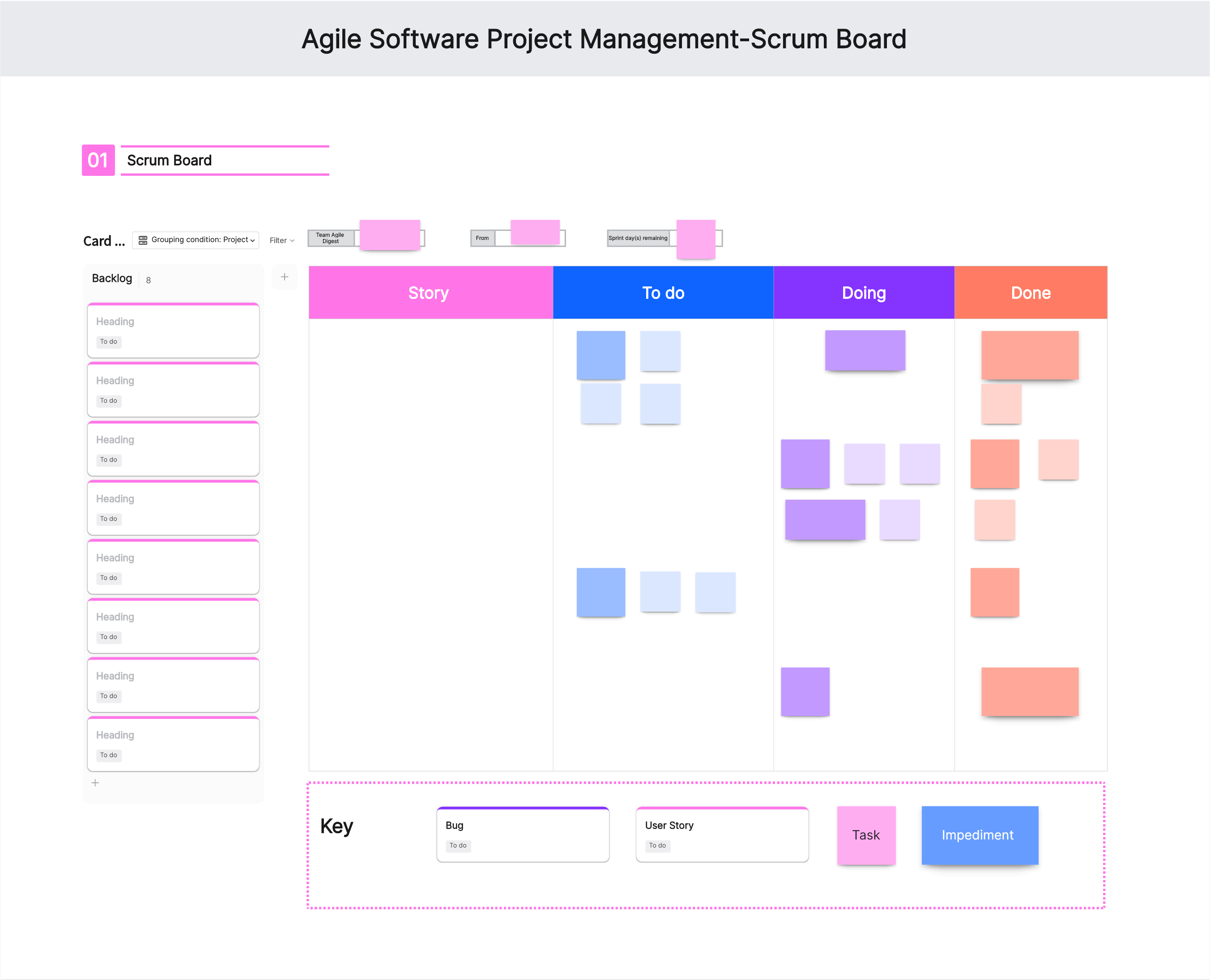What is Agile Software Project Management
Agile Software Project Management is an iterative and flexible approach to managing software development projects. It emphasizes collaboration, adaptability, and delivering high-quality products in shorter time frames. This approach is based on the Agile Manifesto, which values individuals and interactions, working software, customer collaboration, and responding to change.

Benefits of Agile Software Project Management
There are several benefits of Agile Software Project Management.
- Firstly, it allows for frequent and regular communication between the development team and stakeholders, resulting in better understanding of requirements and expectations. This leads to increased customer satisfaction and reduces the risk of misunderstandings or misalignment.
- Secondly, Agile allows for flexibility and adaptability in project management. It enables teams to respond to changing requirements, technology advancements, or market demands. This ensures that the project stays relevant and delivers value to the customers.
- Another benefit of Agile is its focus on delivering working software in short iterations, also known as sprints. This allows for early and continuous feedback from stakeholders, which helps identify and address issues or changes needed. It also helps in managing risks and ensuring that the final product meets the customer's needs.
- Agile Software Project Management also promotes collaboration and self-organizing teams. It encourages team members to take ownership of their work and collaborate closely with each other to achieve project goals. This fosters a positive work culture, promotes creativity and innovation, and improves team morale and productivity.
Overall, Agile Software Project Management offers numerous benefits including improved communication, flexibility, early feedback, and collaboration. It is a valuable approach for managing software development projects effectively and delivering successful products to customers.
How to Use Agile Software Project Management for Better Results
Step1: Getting Started with Agile Software Project Management
The Agile methodology is a flexible and iterative approach to software development that focuses on delivering value to customers through continuous improvement and adaptation. It emphasizes collaboration, self-organizing teams, and the ability to respond to change.
There are several key principles of Agile Software Project Management:
- Customer collaboration over contract negotiation: Agile values the active involvement of customers throughout the development process. This ensures that the final product meets their needs and expectations.
- Working software over comprehensive documentation: Agile prioritizes delivering working software that provides value to the customer. While documentation is still important, it should be kept to a minimum and focus on what is necessary.
- Responding to change over following a plan: Agile recognizes that requirements and priorities can change throughout a project. It encourages teams to embrace change and adapt their plans and processes accordingly.
- Individuals and interactions over processes and tools: Agile values the collaboration and communication between team members. It recognizes that effective teamwork and communication are crucial for project success.
- Iterative development and incremental delivery: Agile breaks down the development process into small iterations or sprints. Each iteration delivers a working product incrementally, allowing for continuous feedback and improvement.
- Self-organizing teams: Agile promotes self-organizing teams that are empowered to make decisions and take ownership of their work. This encourages creativity, innovation, and accountability.
By following these principles, teams can effectively manage software development projects using the Agile methodology. It allows for flexibility, adaptability, and continuous improvement, ultimately leading to successful outcomes for both the development team and the customer.
Step2: Planning Your Agile Software Project
Planning your Agile software project involves several key steps, including creating a product backlog, prioritizing user stories, and estimating effort and time.
- Creating a Product Backlog: The product backlog is a prioritized list of all the features, enhancements, and bug fixes that must be implemented in the software. It serves as the roadmap for the project and should be regularly reviewed and updated. The product owner is responsible for creating and maintaining the product backlog.

- Prioritizing User Stories: User stories are short descriptions of functionality or features from the perspective of an end-user. Prioritizing user stories involves determining their importance and value to the customer or end-user. This helps the development team focus on delivering the most valuable features first.

- Estimating Effort and Time: Estimating the effort and time required for each user story helps in planning and scheduling the project. The development team can use techniques like story points or time-based estimates to determine the complexity and duration of each user story. This helps in resource allocation and setting realistic project timelines.
In the planning process, it is important to involve all relevant stakeholders, including the product owner, development team, and customer. Regular communication and collaboration are key to ensuring that everyone is aligned on project goals, priorities, and timelines.
Remember, Agile software project planning is an iterative process. As the project progresses and new information becomes available, adjustments to the product backlog, user story prioritization, and effort/time estimates may be necessary. The Agile methodology allows for flexibility and adaptability to changing requirements and priorities.
Step3: Executing Your Agile Software Project
Executing your Agile software project involves several key steps, including sprint planning, daily stand-up meetings, and sprint review and retrospectives.
- Sprint Planning: Sprint planning is a collaborative meeting where the development team determines which user stories will be worked on during the sprint. The product owner presents the prioritized product backlog, and the development team selects the user stories they believe they can complete within the sprint. The team also estimates the effort required for each user story and breaks them down into tasks.
- Daily Stand-up Meetings: Daily stand-up meetings, also known as daily scrums, are short meetings held by the development team to provide status updates and discuss any blockers or impediments. Each team member answers three questions: What did I accomplish yesterday? What am I planning to accomplish today? Are there any obstacles in my way? These meetings help the team stay aligned, identify and resolve issues quickly, and ensure progress toward the sprint goal.
- Sprint Review and Retrospective: At the end of each sprint, the development team holds a sprint review meeting to demonstrate the completed work to stakeholders and gather feedback. The product owner reviews the user stories that were completed, and stakeholders provide input and suggestions. The team also conducts a sprint retrospective to reflect on the sprint and identify areas for improvement. This includes discussing what went well, what could have been done better, and any action items to implement in future sprints.
Throughout the execution phase of your Agile software project, it is important to maintain open communication and collaboration among all team members. Regularly reviewing and adjusting the product backlog, monitoring progress towards sprint goals, and addressing any obstacles or issues that arise are key to successful project execution.
Step4: Monitoring and Controlling Your Agile Software Project
Monitoring and controlling your Agile software project is essential to ensure its success. Here are three key practices to consider:
- Tracking Progress with Burndown Charts: Burndown charts are visual representations of the amount of work completed versus the time remaining in a sprint. They help teams monitor progress and identify any deviations from the planned work. By tracking the actual work completed against the projected work, you can easily determine if your project is on track or if adjustments need to be made.
- Identifying and Resolving Issues: Agile projects are prone to encountering issues and obstacles that may impact progress. It is important to have a proactive approach to identify and resolve these issues quickly. Encourage open communication within the team to address any concerns, and assign responsible individuals to resolve them. Regularly reviewing the project status and conducting daily stand-up meetings can help identify and address issues promptly.
- Managing Changes with Agile Software Project Management: Change is inevitable in any software development project. Agile methodologies provide flexibility to accommodate changes throughout the project lifecycle. However, it is important to manage changes effectively to minimize their impact on project scope, timeline, and resources. Prioritize changes based on their business value and impact, and ensure proper documentation and communication to all stakeholders.
By implementing these practices, you can effectively monitor and control your Agile software project, ensuring its success and delivering high-quality products to meet customer needs.
Conclusion
In conclusion, successful Agile software project management relies on key practices such as continuous monitoring and control. By tracking progress with burndown charts, identifying and resolving issues promptly, and effectively managing changes, you can ensure the success of your project. Here are some key points to recap:
- Burndown charts are visual representations of work completed versus time remaining in a sprint. They help monitor progress and identify any deviations from the planned work.
- Agile projects often encounter issues and obstacles that may impact progress. It is important to have a proactive approach to identify and resolve these issues quickly.
- Agile methodologies provide flexibility to accommodate changes throughout the project lifecycle. However, it is crucial to manage changes effectively to minimize their impact on project scope, timeline, and resources.

To achieve successful Agile software project management, consider the following tips:
- Foster open communication within the team to address concerns and resolve issues promptly.
- Cconduct regular reviews of the project status and hold daily stand-up meetings to stay updated on progress and address any emerging issues.
- Prioritize changes based on their business value and impact, and ensure proper documentation and communication to all stakeholders.
By implementing these practices and following these tips, you can ensure the success of your Agile software project and deliver high-quality products that meet customer needs.













